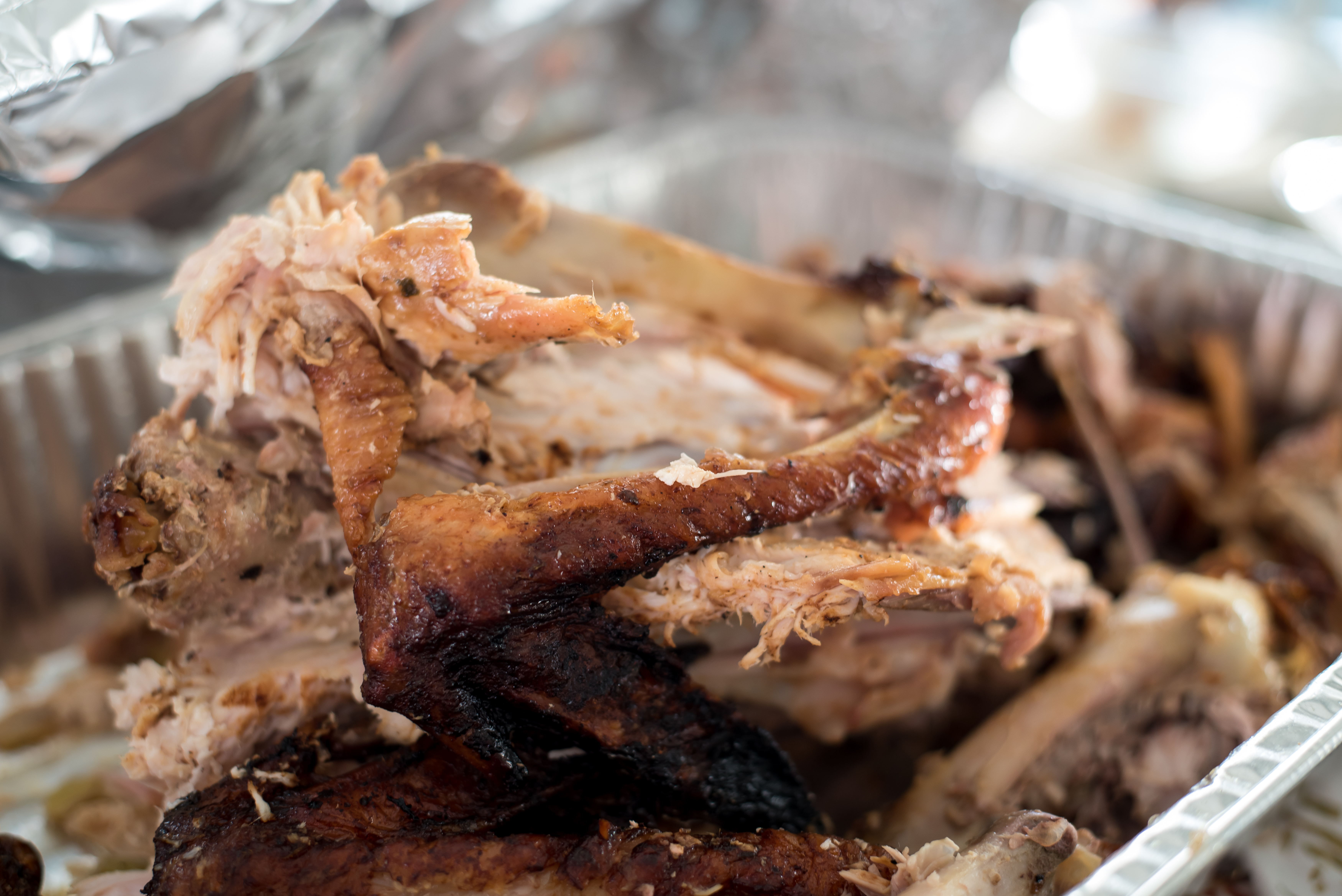
Sausages and Food Safety
Summer sausage, kielbasa, bologna, bratwurst: The list goes on and on. There are so many varieties of sausage. How long can you store them — and where? Are they fully cooked or not? The following background information will answer these questions and others. Use the chart as a guideline for safe storage.
Types of Sausages
Sausages are either uncooked or ready-to-eat. They can be made from red meat (for example, beef, pork, lamb or veal), poultry (turkey or chicken, for example) or a combination. Uncooked sausages include fresh (bulk, patties or links) and smoked sausages.
To prevent foodborne illness, uncooked sausages that contain ground beef, pork, lamb or veal should be cooked to 160 degrees F. Uncooked sausages that contain ground turkey and chicken should be cooked to 165 degrees F.
Ready-to-eat sausages are dry, semi-dry and/or cooked. Dry sausages may be smoked, unsmoked or cooked. Semi-dry sausages are usually heated in the smokehouse to fully cook the product and partially dry it. Cooked sausages (for example, bologna and frankfurters) are cooked and may also be smoked.
Who inspects sausages?
USDA's Food Safety and Inspection Service (FSIS) inspects all sausages in interstate commerce and all sausages that are exported to other countries. If sausages are made in a retail establishment (such as a grocery store, meat market or restaurant), the sausage may be under the jurisdiction of that state's health or agriculture department.
What is on the label?
The label provides consumers with information about a product at the time of sale. Labels are required to bear certain mandatory features including:
- the product name;
- an ingredients statement;
- the name and place of business of the manufacturer, packer or distributor;
- an accurate statement of the net quantity of contents;
- the inspection legend and USDA establishment number;
- a safe handling statement if the product is perishable (for example, “Keep Frozen” or “Keep Refrigerated”);
- safe handling instructions if the meat or poultry component of the product is not ready to eat; and
- nutrition facts information. The nutrition facts information on the label can help consumers compare products and make more informed, healthy food choices. If sausages are made and packaged in a local store, the nutrient information on the package is voluntary or it may be at the point of purchase. The application of a “Use” or “Sell- By” date is optional.
What must be listed on the label of sausages that are NOT ready-to-eat?
The labeling for sausages under FSIS inspection that are NOT ready-to-eat must bear certain features such as, safe handling instructions. In cases where the sausage is partially cooked or otherwise appears cooked but requires cooking by the consumer for safety, FSIS requires additional labeling features such as a prominent statement on the principal display panel, for example, "Uncooked, Ready to cook, Cook before eating, Cook and serve" or “Needs to be fully cooked.” In addition, the product should display cooking directions that are sufficient for the intended user. The manufacturer would have to validate that the cooking directions are sufficient to destroy any pathogens that could be present.
If a sausage is perishable, the label must say “Keep Refrigerated.” Some federally inspected shelf-stable sausages are not ready to eat. If so, they will be labeled as above but will not have “Keep Refrigerated” on the label.
Definition of Fresh Sausages
Fresh sausages are a coarse or finely “comminuted” (reduced to minute particles) meat food product prepared from one or more kinds of meat, or meat and meat “byproducts” (heart, kidney or liver, for example). They may contain water not exceeding 3% of the total ingredients in the product. They are usually seasoned, frequently cured, and may contain binders and extenders (for example, wheat flour and non-fat dry milk). They must be kept refrigerated and thoroughly cooked before eating.
Content of Fresh Sausages
- “Fresh Pork Sausages” may not contain pork byproducts and may contain no more than 50% fat by weight.
- “Fresh Beef Sausages” may not contain beef byproducts and may contain no more than 30% fat by weight.
- “Breakfast Sausages” may contain meat and meat byproducts and no more than 50% fat by weight.
- “Whole Hog Sausage” contains meat from swine in such proportions as are normal to a single animal and no more than 50% fat by weight.
- “Italian Sausage Products” are cured or uncured sausages containing at least 85% meat, or a combination of meat and fat, with the total fat content constituting not more than 35% of the finished product. It contains salt, pepper, fennel and/or anise and no more than 3% water. Optional ingredients permitted in Italian Sausages are spices (including paprika) and flavorings, red or green peppers, onions, garlic and parsley, sugar, dextrose and corn syrup.
Cooked and/or Smoked Sausages
Cooked and/or smoked sausages are made of one or more different kinds of chopped or ground meats which have been seasoned, cooked and/or smoked. Meat byproducts may be used. Included in this category are:
- liverwurst
- hot dogs
- bologna
- knockwurst
- cooked bratwurst
- braunschweiger
- cooked Thuringer
- cooked salami*
*Cooked Salami (not dry) is made from fresh meats which are cured, stuffed into casings and cooked in a smokehouse at high temperature. It may be air dried for a short time. It has a softer texture than dry and semi-dry sausages and must be refrigerated.
Meat Specialties
Some meat specialties are ready-to-eat sausage like products. These are made from comminuted meats that are seasoned and usually cooked or baked rather than smoked. They are usually sliced and served cold. Included in this category are:
- chopped ham loaf
- peppered loaf
- head cheese
- jellied corned beef
- ham and cheese loaf
- honey loaf
- old fashioned loaf
- olive loaf
- pickle and pimento loaf
- scrapple
- souse
- veal loaf
Dry and Semi-Dry Sausages
Dry and semi-dry sausages are possibly the largest category of dried meats, particularly in the United States. These products can be fermented by bacterial growth for preservation and to produce the typical tangy flavor. Alternatively, they may be cultured with lactic acid — much as cheese, pickle and yogurt makers do — to eliminate the fermentation phase and shorten the process. They are, with a few exceptions, cooked.
Fermentation is one of the oldest methods of preserving meats. Dry sausages — such as pepperoni, and semi-dry sausages such as Lebanon bologna and summer sausage, have had a good safety record for hundreds of years.
In this procedure, a mixture of curing ingredients, such as salt and sodium nitrite, and a “starter” culture of lactic acid-bacteria, is mixed with chopped and ground meat, placed in casings, fermented and then dried by a carefully controlled, long, continuous air-drying process. The amount of acid produced during fermentation and the lack of moisture in the finished product after drying typically have been shown to cause pathogenic bacteria to die.
Dry sausages require more time to make than other types of sausages and are a more concentrated form of meat. Dried sausages range from 60% to 80% of their original weight before drying.
Semi-dry sausages are usually heated in the smokehouse to fully cook the product and partially dry it. Semi-dry sausages are semi-soft sausages with good keeping qualities due to their lactic acid fermentation and sometimes heavy application of smoke. Some are mildly seasoned, and some are quite spicy and strongly flavored.
What are examples of dry and semi-dry sausages?
Dry sausages include:
- Sopressata (a name of a salami)
- pepperoni (not cooked, air dried)
- Genoa Salami (Italian, usually made from pork but may have a small amount of beef; it is moistened with wine or grape juice and seasoned with garlic
Semi-dry sausages include:
- summer sausage
- Lebanon bologna
- Cervelat
- Thuringer
Are any Sausages Shelf Stable?
Some dry sausages are shelf stable (in other words, they do not need to be refrigerated or frozen to be stored safely). Dry sausages require more production time than other types of sausage and result in a concentrated form of meat. If the product is shelf stable and ready to eat, the product is not required to have a safe handling statement, cooking directions or a "Keep Refrigerated" statement.
Should people “At Risk” eat dry sausages?
Because dry sausages are not cooked, people “at risk” (older adults, very young children, pregnant women and those with immune systems weakened by disease or organ transplants) might want to avoid eating them. The bacterium E.scherichia coli (E. coli ) O157:H7 can survive the process of dry fermenting, and in 1994, some children became ill after eating dry cured salami containing the bacteria.
After the outbreak, FSIS developed specific processing rules for making dry sausages that must be followed or the product must be heat treated. These products are included in the FSIS microbial sampling program for E. coli O157:H7, and in 1997, FSIS began to test fermented sausages for Salmonella and Listeria monocytogenes.
Dates on Packaged Sausages
Although dating is a voluntary program and not required by the federal government, if a date is used it must state what the date means. The product can be used after the date, provided it was stored safely.
- “Sell-By” date — tells the store how long to display the product for sale for inventory management. It is not a purchase or safety date.
- “Best-if-Used-By/Before” date — date by which product should be used for best flavor and quality. It is not a purchase or safety date.
- “Use-By” date — the last date recommended for use of the product while at peak quality. It is not a safety date except for when used on infant formula.
Storage
All sausage — except dry sausage — is perishable and therefore must be kept refrigerated. The following storage times should be followed for maximum quality.
Sausage Storage Chart
| Type of Sausage | Refrigerator - Unopened | Refrigerator - After Opening | Freezer |
|---|---|---|---|
| Fresh Sausage, Uncooked | 1 to 2 days unopened or opened | 1 to 2 days unopened or opened | 1 to 2 months |
| Fresh Sausage, After Cooking by Consumer | (not applicable) | 3 to 4 days | 2 to 3 months |
| Hard/Dry Sausage | Whole, 6 weeks in pantry; indefinitely in refrigerator | 3 weeks | 1 to 2 months |
| Hot Dogs and Other Cooked Sausage | 2 weeks | 7 days | 1 to 2 months |
| Luncheon Meats | 2 weeks | 3 to 5 days | 1 to 2 months |
| Summer Sausage (Semi-dry) | 3 months | 3 weeks | 1 to 2 months |



